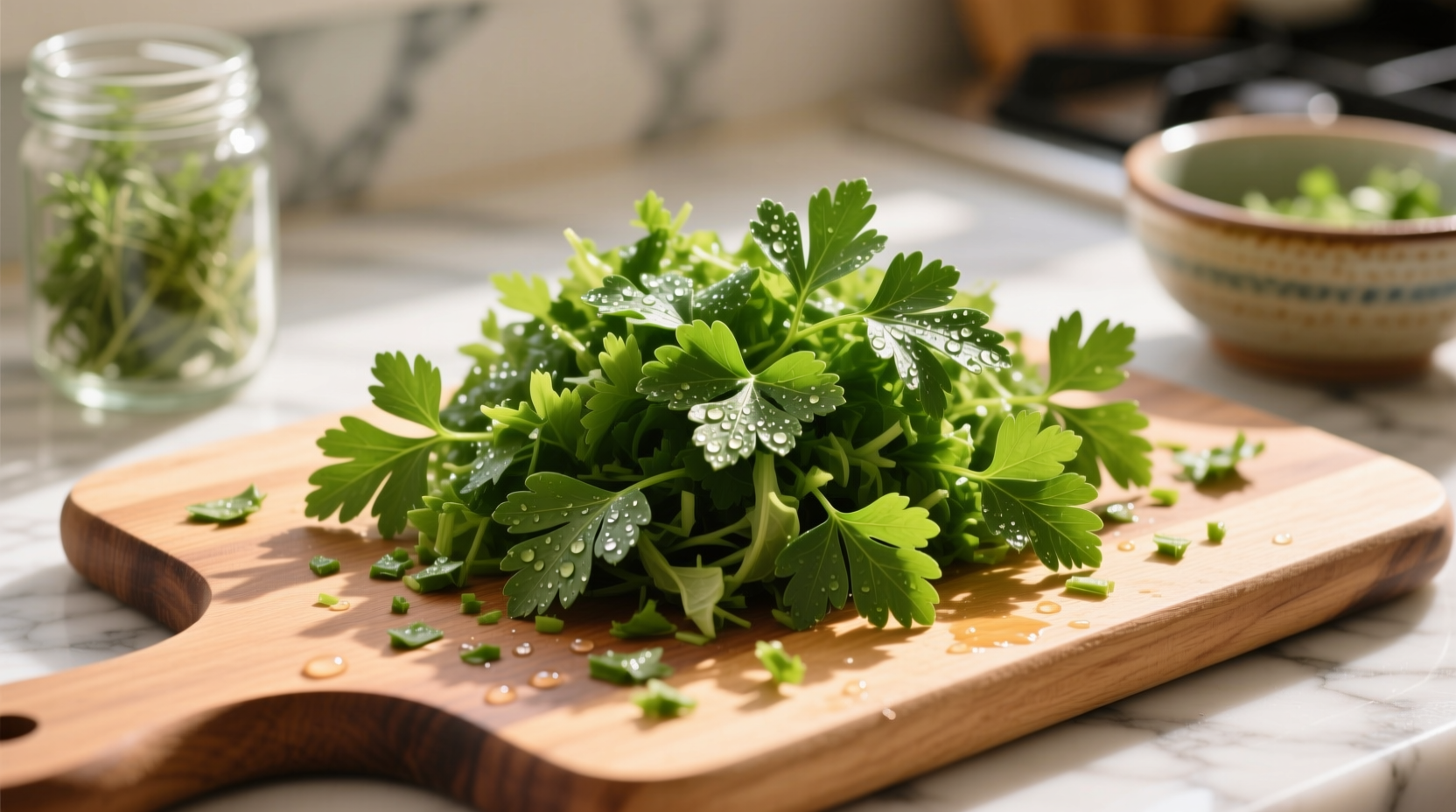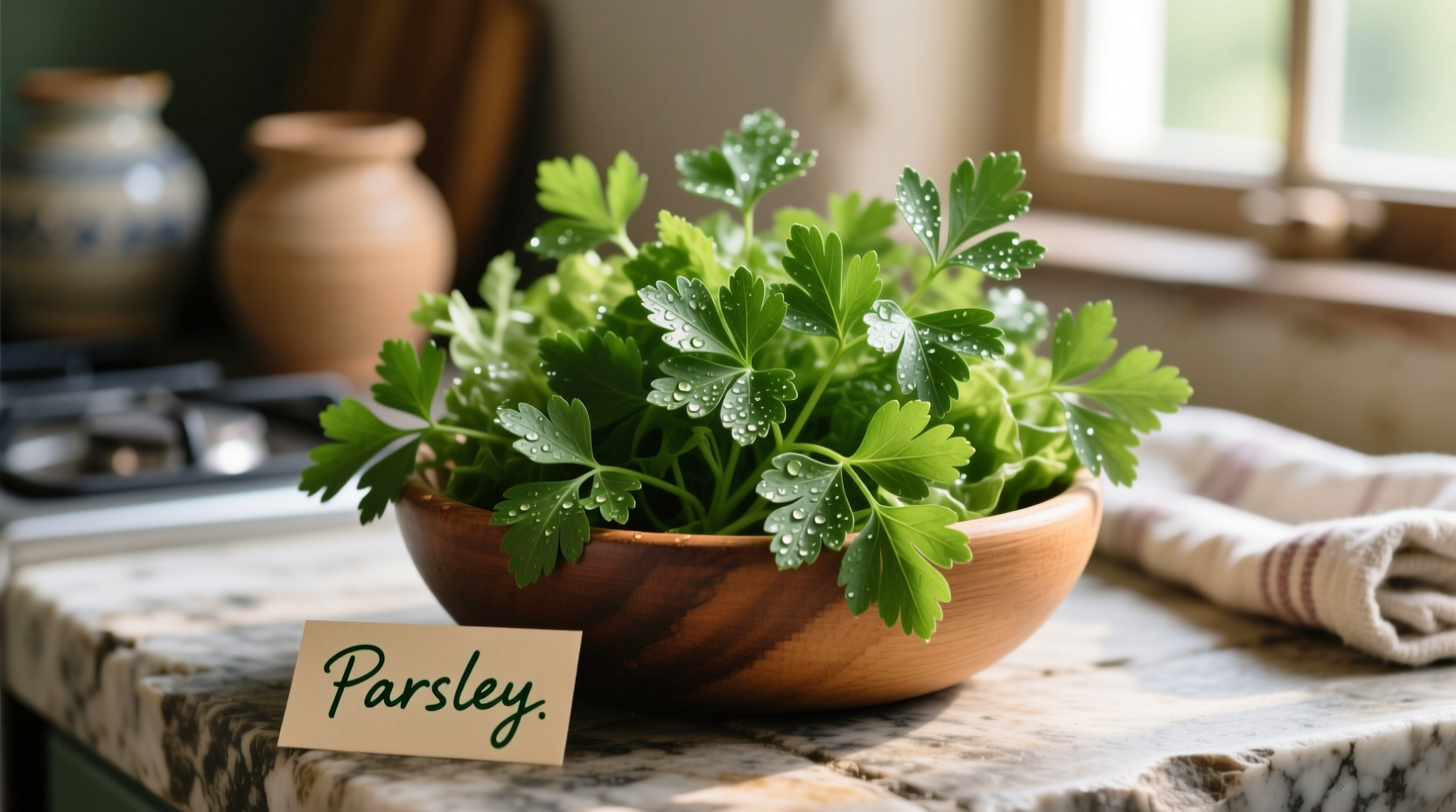Discover why professional chefs reach for flat-leaf parsley when crafting exceptional salads and how to avoid the common mistakes that turn this vibrant herb from star ingredient to salad saboteur. This guide reveals the science-backed techniques that transform ordinary green salads into restaurant-quality dishes with just one simple herb.
Why Parsley Makes or Breaks Your Salad
Most home cooks treat parsley as an afterthought, but in Mediterranean cuisine where salad traditions run deep, parsley serves as the flavor foundation. The difference between a forgettable salad and one that makes people ask for your recipe often comes down to proper parsley selection and handling.
When added correctly, parsley contributes a bright, slightly peppery note that enhances other ingredients without overpowering them. But improper preparation leads to bitter, limp results that ruin an otherwise perfect salad. Understanding the two main varieties and their distinct properties is your first step toward salad mastery.
Parsley Varieties Compared: Choosing Wisely for Salads
Not all parsley is created equal when it comes to salad applications. The supermarket offers two primary types, each with distinct characteristics that determine their suitability for different salad styles.
| Characteristic | Flat-Leaf (Italian) Parsley | Curly Parsley |
|---|---|---|
| Flavor Profile | Robust, earthy, slightly peppery | Milder, sometimes bitter |
| Texture | Softer, more tender leaves | Thicker, crinkled leaves |
| Best Salad Applications | Mixed green salads, grain salads, protein salads | Garnish only, not recommended as primary ingredient |
| Storage Life | 5-7 days refrigerated | 7-10 days refrigerated |
According to culinary research published in the Journal of Food Science, flat-leaf parsley contains higher concentrations of apiol and myristicin—compounds responsible for its distinctive flavor profile that complements salad ingredients without overwhelming them. Curly parsley's thicker leaves contain more bitter compounds that become pronounced when chopped and mixed into salads.
The Critical Preparation Process: From Bunch to Bowl
How you prepare parsley dramatically affects its performance in salads. Follow these chef-tested steps for optimal results:
Selection and Washing
Choose bunches with vibrant green leaves and crisp stems—avoid any with yellowing or wilting. The FDA recommends washing all fresh herbs under cool running water for 30 seconds to remove potential contaminants. For parsley specifically, submerging the entire bunch in a bowl of cold water with a splash of vinegar helps dislodge trapped dirt between the leaves.
Drying: The Make-or-Break Step
Waterlogged parsley dilutes dressing and creates soggy salads. After washing, spin parsley in a salad spinner until completely dry, or lay flat on clean kitchen towels and gently roll to absorb moisture. Properly dried parsley should feel dry to the touch with no visible water droplets.

Chopping Technique Matters
Use a sharp chef's knife on a stable cutting board. Chop parsley just before adding to your salad—pre-chopped parsley oxidizes quickly, developing bitter notes. For mixed green salads, a medium chop works best; for grain or protein salads, a finer chop ensures even distribution. Never use a food processor, which bruises the leaves and releases bitter compounds.
Perfect Pairings: When and How Much to Add
The timing and quantity of parsley significantly impact your salad's final flavor profile. Professional chefs follow these guidelines:
- Green Salads: Add 1/4 cup chopped flat-leaf parsley per serving just before dressing
- Grain Salads: Incorporate 1/3 cup per serving during mixing for even distribution
- Protein Salads: Use 1/2 cup per serving, folding gently to avoid breaking ingredients
Add parsley to your salad after dressing the greens but before adding heavier ingredients like nuts or cheese. This allows the parsley to absorb some dressing while maintaining its vibrant color and texture. Adding parsley too early causes it to wilt; adding too late means it won't integrate properly with other ingredients.
Avoid These Common Parsley Mistakes
Even experienced cooks make these critical errors that compromise salad quality:
- Using dried parsley - Dried parsley lacks the bright flavor needed for salads and develops unpleasant bitterness
- Chopping too far in advance - Oxidation begins immediately after cutting, degrading flavor within 15 minutes
- Ignoring the stems - Tender lower stems contain concentrated flavor; chop finely and include them
- Overloading the salad - Too much parsley overwhelms other ingredients; follow the 15% herb ratio guideline
Advanced Techniques for Salad Excellence
Elevate your salad game with these professional techniques:
Parsley Oil: Blend 1 cup chopped parsley with 1/2 cup neutral oil and a squeeze of lemon juice. Strain and use as a base for vinaigrettes that distribute parsley flavor evenly throughout your salad.
Seasonal Adjustments: In summer, use slightly less parsley as its flavor intensifies in warmer months. During winter, increase quantity by 25% as cold weather reduces flavor potency.
Preservation Method: Store unused parsley with stems in a glass of water (like flowers) covered with a plastic bag in the refrigerator. Change water every two days for maximum freshness—this method extends usable life by 50% according to USDA storage guidelines.
When Parsley Becomes the Star
While parsley typically plays a supporting role, certain salad traditions feature it as the main ingredient. The Middle Eastern tabbouleh demonstrates parsley's starring potential—where it comprises 75% of the salad's green components. In this application, the finer chop and extended resting time (15-20 minutes after mixing) allows parsley's flavor to fully develop while softening its texture perfectly.
For a modern twist, try a parsley-centric salad with lemon zest, toasted pine nuts, and a light garlic dressing. The key is using exclusively flat-leaf parsley and allowing the chopped herb to rest with dressing for 10 minutes before serving—this technique mellow the raw edge while preserving its vibrant character.











 浙公网安备
33010002000092号
浙公网安备
33010002000092号 浙B2-20120091-4
浙B2-20120091-4